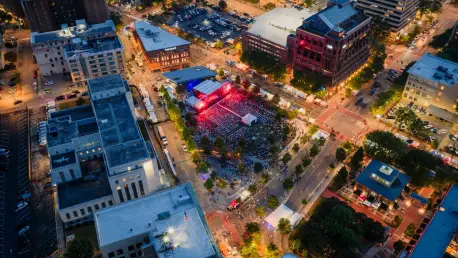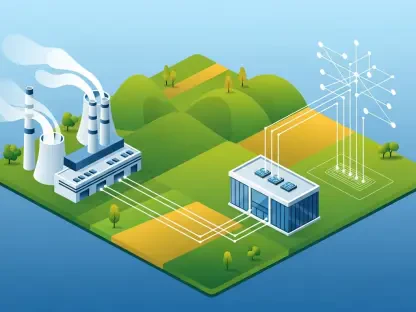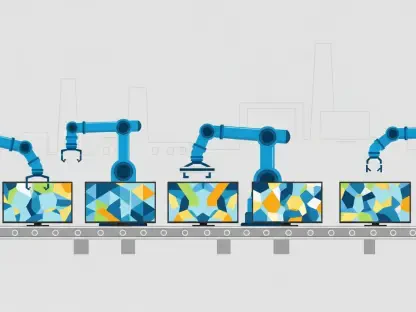In an era where high-speed internet has become a cornerstone of urban life, the demand for reliable connectivity in densely populated cities continues to surge, presenting both opportunities and significant challenges for providers. Fixed Wireless Access (FWA) has emerged as a promising solution to bridge the broadband gap, especially in areas where wired infrastructure struggles to keep pace with population density. Tarana Wireless, a company initially known for its success in rural deployments across the United States, is now setting its sights on urban markets. With the launch of its innovative G2 platform, Tarana aims to tackle the unique hurdles of city environments, such as capacity constraints and spectrum scarcity. This strategic pivot reflects a broader trend in the telecommunications industry, where FWA is gaining traction as a viable alternative to traditional broadband, fueled by a growing market share and millions of potential households waiting to be connected.
Urban Expansion and Market Potential
Rising Demand for FWA in Cities
The urban landscape for broadband connectivity is witnessing a remarkable shift, with FWA carving out a notable presence in metropolitan areas. Recent data from industry reports highlights that FWA providers already hold a 6% market share in urban regions, a figure that underscores the technology’s growing acceptance. Additionally, studies estimate an addressable market of nearly 14.6 million households in these densely populated zones, pointing to a vast untapped opportunity. This surge in demand is driven by the limitations of wired networks, which often face logistical and cost barriers in crowded city settings. For many residents, FWA offers a faster and more flexible path to high-speed internet, bypassing the delays associated with laying fiber or upgrading legacy systems. Tarana Wireless recognizes this potential and is positioning itself to capitalize on the trend by adapting its expertise from rural successes to the complexities of urban environments, where user density and bandwidth needs present a different set of challenges.
Challenges of Traditional Technologies
Despite the promising outlook for FWA in urban areas, significant obstacles remain, particularly with existing wireless technologies that struggle to meet the demands of high-density settings. Traditional Wi-Fi-based FWA systems often falter under the pressure of serving too many users in close proximity, as access points interfere with each other, leading to degraded performance and economic infeasibility for many wireless internet service providers. Similarly, 5G FWA, while backed by major mobile network operators, grapples with spectrum scarcity. Industry insights reveal that serving a single household consumes up to 30 times more bandwidth than a mobile device, rapidly exhausting available spectrum when homes are added to mobile networks. These limitations highlight a critical gap in current solutions, creating a pressing need for innovative approaches that can handle the scale and intensity of urban connectivity requirements without compromising on speed or reliability.
Technological Innovation and Strategic Solutions
Unveiling the G2 Platform’s Capabilities
Tarana Wireless is stepping up to address the urban FWA challenge with its newly launched G2 platform, designed to deliver a substantial leap in capacity and performance. This cutting-edge technology boasts an impressive 6.4 Gbps per sector, enabling service to approximately 2,000 customers per tower—a scale that caters to the needs of larger internet service providers targeting city markets like Phoenix and San Jose. The platform’s ability to support four-carrier integration across both licensed Citizen Broadband Radio Service (CBRS) and unlicensed 5GHz and 6GHz spectrum bands sets it apart. With dual-resonant antennas, it operates at multiple frequencies simultaneously, offering up to 160MHz of bandwidth and achieving link speeds of 1.6 Gbps, doubling the capacity of its predecessor. This flexibility empowers operators to navigate varying spectrum availability, ensuring consistent service delivery in the face of urban density and competition for bandwidth resources.
Spectrum Opportunities and Industry Shifts
Beyond the technological advancements of the G2 platform, the evolving spectrum landscape presents additional avenues for enhancing urban FWA deployments. Recent transactions, such as EchoStar’s sale of spectrum assets, have raised questions about the future of its remaining Priority Access Licenses (PALs) in the CBRS band, which offer higher priority over general users. Industry leaders suggest that these licenses could prove invaluable for FWA providers, including Tarana’s customer base, by providing a competitive edge in spectrum access. Whether these PALs are acquired by new entrants or retained by affiliated entities, their availability could significantly boost fixed wireless capabilities in crowded markets. This development underscores the importance of spectrum strategy in scaling FWA solutions, as providers must adapt to a dynamic regulatory and competitive environment to meet the escalating demand for urban broadband connectivity.
Reflecting on a Path Forward
Building on Urban Broadband Success
Looking back, Tarana Wireless made a bold move by transitioning from its rural-focused origins to confronting the intricate challenges of urban broadband delivery. The company’s efforts to harness the growing momentum of FWA in cities paid off through the deployment of the G2 platform, which tackled critical issues like capacity constraints and spectrum limitations with remarkable innovation. By enabling service to thousands of customers per tower and integrating multi-band spectrum capabilities, Tarana provided a robust framework for internet service providers to penetrate densely populated markets. This strategic shift not only highlighted the viability of FWA as an urban solution but also set a precedent for how tailored technology could overcome the shortcomings of traditional wireless systems, paving the way for broader industry adoption.
Future Steps for Sustainable Growth
As the journey continues, the next steps for stakeholders in the FWA space involve a deeper focus on spectrum acquisition and partnerships to sustain urban expansion. Providers should prioritize securing access to valuable resources like CBRS PALs to enhance service quality and coverage in competitive city environments. Collaborating with major ISPs and emerging players will also be crucial to scale deployments efficiently, ensuring that technological advancements like the G2 platform reach their full potential. Additionally, continuous investment in research and development can help anticipate future density challenges, refining solutions to stay ahead of demand curves. By aligning innovation with strategic spectrum management, the industry can build a resilient foundation for delivering high-speed internet to millions of urban households, transforming connectivity landscapes for years to come.









